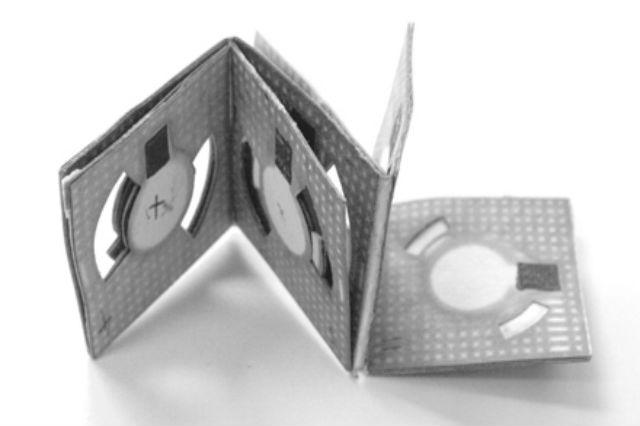
Choi has constructed a battery – a five-cent battery, no less – that’s powered by microbial respiration. Through this generation process, Choi discovered how to operate a paper battery with just a drop of bacteria-laden liquid. In other words, it’s a battery that runs on dirty water.
Before it’s folded up, one side of the paper battery is screen printed with a special carbon-based paint to create an anode. On the other side, a coating of nickel-based solution is applied to the paper to create an air-breathing cathode. After being folded, the battery only needs bacteria to begin producing power. Add a single drop of murky puddle water and the battery has everything it needs to start spitting out juice.

The cell doesn’t produce a whole lot of power, but it doesn’t need to. Choi actually designed the system to be a power source for his paper-based bio-sensor — a device that only needs a couple microwatts to function. The idea is that eventually, these cheap, dirty-water-powered sensors could be used for disease control and prevention in third-world countries with limited access to medicine.
Choi didn’t invent the whole “paper-based biosensor” concept on his own though. These paper biosensors are something that scientists have explored before, but they’re typically designed to work in conjunction with some kind of handheld device. The ones Choi is working on, however, wouldn’t require any additional electronics to function.
“Choi envisions a self-powered system in which a paper-based battery would create enough energy — we’re talking microwatts — to run the biosensor,” according to Binghamton University.
Choi just received an almost $300,000 grant from the National Science Foundation to further his research. His journal article documenting the work will be published in the July edition of the journal Nano Energy.


